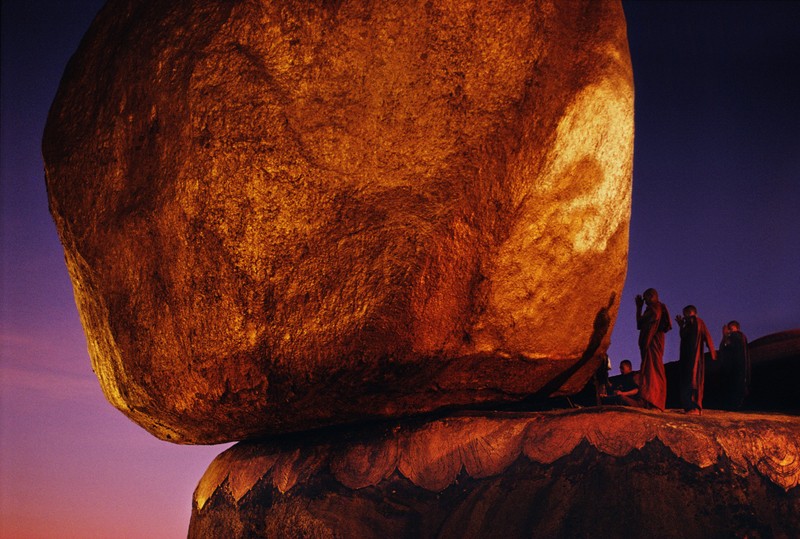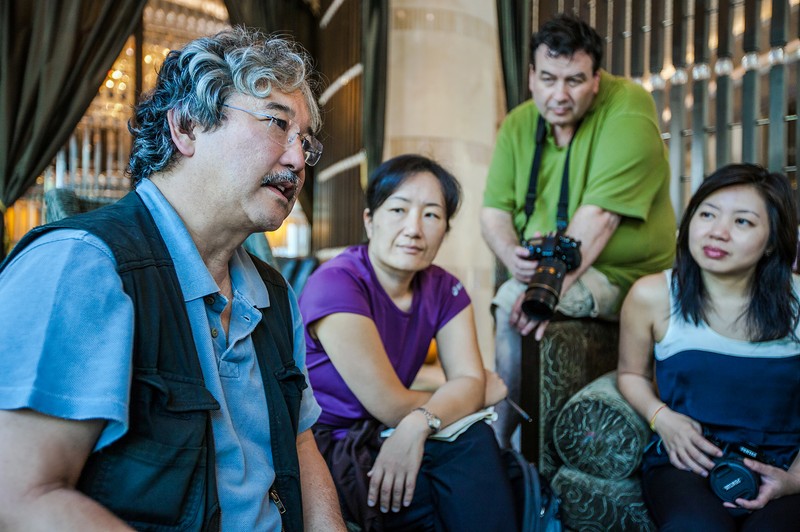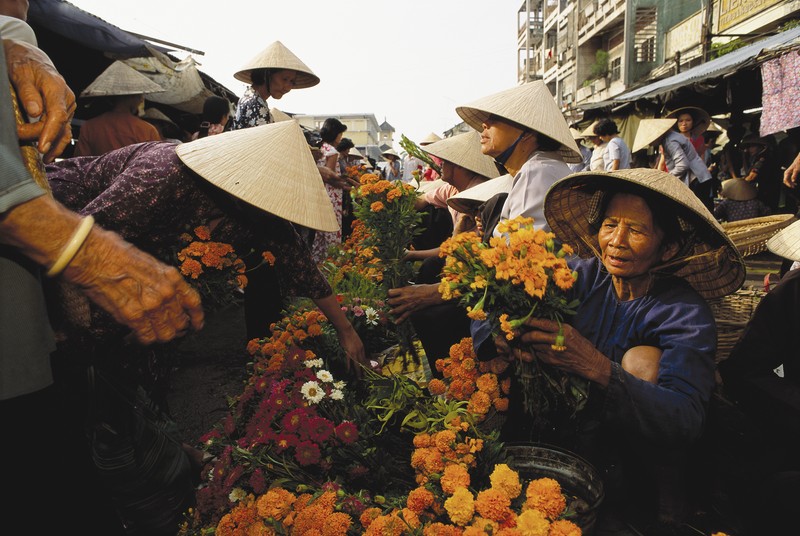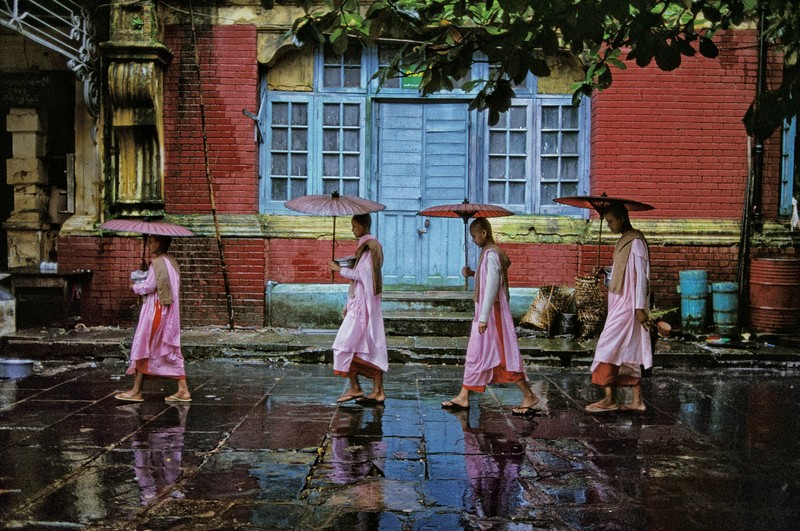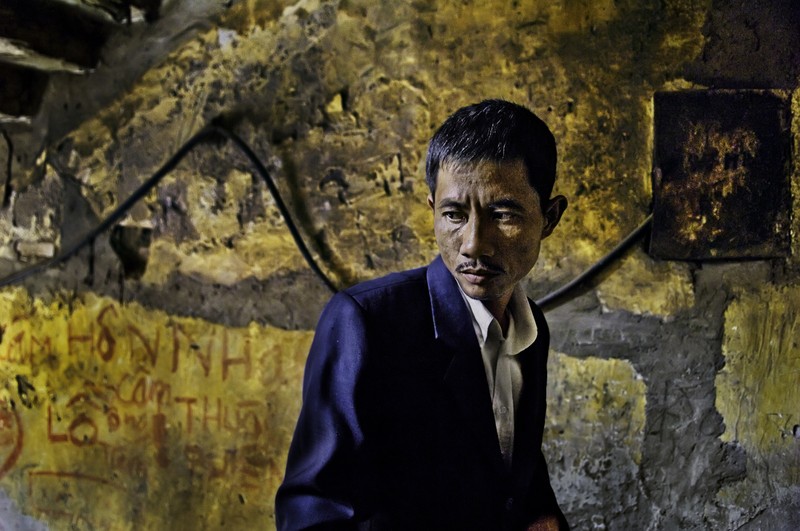In conversation with National Geographic photographers Steve McCurry and Michael Yamashita
You may not know them, but you know their work. They’ve taken you places and sharpened the way you look at the world. You’ve probably never met them, probably wouldn’t recognize them, but that’s because their job is to be invisible, to blend in. They belong in the field, and the further afield, the better.
Steve McCurry and Michael Yamashita, two renowned National Geographic photographers, take beautiful photographs and capture iconic moments, and their continent of choice for shooting is Asia. They have created their reputations by building the visual standards of the magazines they have contributed to. They’re still doing it, but now they freely admit that the market, the places, and the opportunities are no longer what they once were. Over the course of a week of running around shooting, editing and critiquing at a photo seminar in Bangkok, the two took the time to share their knowledge and experience about life and profession with a camera.
Why Asia?
MY: I’m Asian-American and I am always coming back to this region. I blend in and I like the food – I say that I only work in countries where I can eat a bowl of rice at every meal. I started in 1989, so we’re talking over 30 years, and I’m currently working on my 32nd and 33rd stories for National Geographic – both of which are in China.
One of your first major shoots in Asia for the magazine was on the Mekong shortly after the end of the American War.
MY: I did a story on the Mekong. I was the first photographer to go from the source of the river to its mouth, which of course is in the delta in Vietnam. It was in those days when we had the big assignments and it was a pivotal story for me, with a lot of pages in the magazine; I set a record at that time for double page spreads in the magazine with the story. The story was very ‘total access,’ meaning not one small photo in the story, but just page after page after page of double spreads. The double page spread is my kind of picture: I always shoot horizontal, I very rarely shoot vertical, so my photos lend themselves to the spread format.
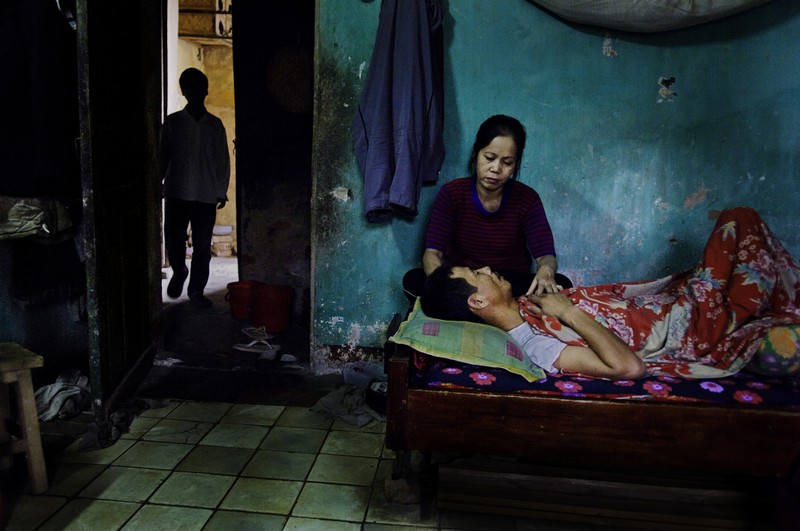
Magnum – MCS2007003G01013, NYC78691
United Nations Global Fund, Access to Life
final print_MACRO
Photo by: Steve McCurry
It was pivotal for me not only as a story (and it became a book) but also as one of the very first photographer-writer teams into the Vietnam delta after the war. Literally. It was not easy to get clearance to shoot in Vietnam, nor was it easy in Cambodia, and we were the first to enter Cambodia, and we were there right when King Sihanouk came back. And so there was great interest in this story and we could show everyone what this region looked like, because nobody had done anything there for some time.
For me it was very important because I am an Asian-American and I tried very hard to stay out of the war, both for political reasons and for the fear that because of my features, if I went to Vietnam as a soldier, I could easily be shot by the American side by mistake. That wasn’t the first thing on my mind, but it was a consideration. But I protested against the war, along with many others of my generation, and as most young people in America, who were growing up during this time, the war was a defining event in our lives and it left impressions on who we are today. So it was a very powerful experience for me to get to travel to Vietnam for the story, and the research that went into the story, combined with the experience, made me sort of an expert on the subject, and the experience was a very personal one. And it culminated in my wife and I adopting a young Vietnamese girl, so you can see how, from many angles, the Mekong story was a pivotal one for me personally and professionally.
Flowers for the Tet New Year celebration fill the market at Can Tho [The Mekong, National Geographic, February 1993] / Michael Yamashita
Steve, you also did a story somewhat recently in Vietnam?
SM: My first trip to Vietnam was in 2007 and I was impressed. Vietnam was such an important part of my growing up, but I found that the people had completely moved on – more perhaps than we have in America. They were very hospitable, very welcoming to me as a foreigner and as an American. I went to do a story on AIDS and I spent a lot of time outside Hanoi with four separate families in separate villages and they were most hospitable. I was with them every day for a month – two trips for two weeks.
I found it very easy to work in Vietnam because people were open to photography, to me, and there was such a strong, individual culture and I found it very inviting. I would love to go back to Vietnam because I am interested in Buddhism and I know that Vietnam has a strong Buddhist culture.
What makes a great photo?
MY: A good photograph is one that has great impact. It compels the reader to stop turning the page and it forces them to read the caption and then possibly they will read the story. The portrait or the landscape almost invariably in a National Geographic story has a subject and a story combined – each image contains a tremendous amount of information. And the photos are not in the magazine because they are so beautiful. They are there because of their impact, because of this combination that gets you to stop and stare.
Procession of nuns, Rangoon, Burma, 1994. Photo by Steve McCurry.
And then how do you frame your subject?
SM: Graphically, when you are looking at a scene, it helps to look at the elements more as shapes as opposed to trees or people or whatever it is, and try to organize those shapes into a coherent, pleasing structure or harmony. I think we look at pictures and we subliminally have our sense of what is pleasing to the eye, what has harmony, what has poetry, balance. It’s hard to articulate it, but you kind of know it when you see it: a combination of harmony and poetry, balance and emotional content. But then when you look at a picture, and you are asking what it is about, you are looking for its emotional impact – will it make me laugh, cry? These are all elements that come together in successful picture making.
Do you have any opinion on portraits with the subject looking into the lens?
MY: Some of my picture editors will never publish a picture with the eyes focusing at the camera, whereas Steve’s style is to have the subject engaging with the camera. It’s a subjective thing. I have nothing against a subject’s eye contact with the camera so long as there is awareness but still sincerity.
What of the notion that the way certain images of poverty, war, or hardship are taken by professionals or portrayed in magazines actually make these hardships visually appealing or even romantic?
MY: The National Geographic style doesn’t publish pictures to romanticize poverty or hardship. There’s a lot of ugliness in the world, but illustrating it is not the mission of the magazine. There are a number of other sources for those stories if that is what you are looking for. We are storytellers; we are aiming to shock you with lots of storytelling ingredients in the image. And of course, there may be stories that have environmental impact, but our job is to make you look at the photograph, and not in a way that exploits suffering or portrays it as visually attractive.
Nguyen Quoc Khanh in the stairwell of his tenement apartment in Viet Tri, Phu Tho
United Nations, Global Fund, Access to Life , 2007 / Steve McCurry
Can you share your typical day when working on assignment?
MY: I am always up at sunrise and always shooting through the sunset because I’m trying to maximize my chance to shoot with the best light. Photographers are paid to be lucky but we try to make our own luck by working in the best times of the day for sure. So I will have a subject to shoot – either at sunrise or sunset – and I will be in place 30 minutes before the sunrise, in the dark, to shoot the market or the monks coming down the street receiving alms or whatever it is. I want to be there before it starts just to know how it is coming together – how the boats are coming down the klongs towards the marketplace, I want to see all that traffic and photograph the whole thing as it develops. I’ll be there for whatever and however long it takes – from sunrise through to when the light is getting really hard, and when you are shooting in the tropics, 10am is already hard light.
Then it’s time to grab breakfast someplace nearby and to move indoors to shoot subjects that aren’t dependent on outside light: somebody’s home or some situation where I can shoot in open shade. Often this period is also the travel time; it’s the middle of the day, and I have to figure out where I need to go to be at my next destination. If there’s time, I’ll take a nap – my down time needs to be during that hard, hot light of mid-day when it’s just difficult to make pictures. Because in the late afternoon, I’m back out looking to put my subject in the best light or in the afternoon long shadows – what we call the magic hour. So they are long days. Of course now, with digital, I’ll be editing what I shot that day when I get back to my hotel that evening, catching up with any business and going over the next day’s itinerary.
So is there a future for this type of photo-storytelling?
MY: Print is dying and there are fewer magazines and newspapers to work for. On the other hand, the ability to exhibit your work is easier than ever. There’s an internet and everyone is taking pictures like crazy and, of course, posting their photos and because of that the entire industry is going down, in that the professional cannot make a living anymore. Whereas in the old days, there was a filter, and the filter was the picture editor, who, as a purveyor of quality, would say this picture is good, this one is not good, this one deserves to be printed and so it was printed in some form: magazine, photography magazine, and so on.
Now, of course, anyone can put up pictures, so it is better than ever to show off your work, but the problem is that this also means there is that much more bad stuff out there and it’s burying the good stuff. Also, outlets for professional photographers like selling stock are also dying because magazines are going to the public internet sites and offering people the absolute minimum to use a particular photo in their magazine, and the people are usually happy just to be published, so they help drive down the market price and help eliminate assignments that would otherwise go to professionals.
But it’s not all bad news. At the same time, we are also seeing news magazines like Time and Newsweek ramping it up and publishing a lot more elaborate double page spreads or full page quality shots. It used to be that a story would be illustrated with multiple images: detailed shots, environmental shots, etc. But now what we are seeing is the single, best shot speaking for the entire story. Every story is one picture. So there are fewer photos, but what is there is top quality, and a lot of ‘bang!’ impact. Today you just need one great picture and a caption. The rest of the information you’re getting out of the text.
When not shooting on assignment, Mike regularly teaches workshops around the world. If you’d like to join one of his workshops, watch the Events page at www.michaelyamashita.com
Featured photo: Kyaiktiyo, Myanmar [Monks praying by the Golden Rock], 1994 / Steve McCurry

